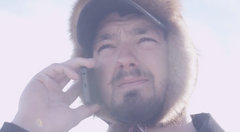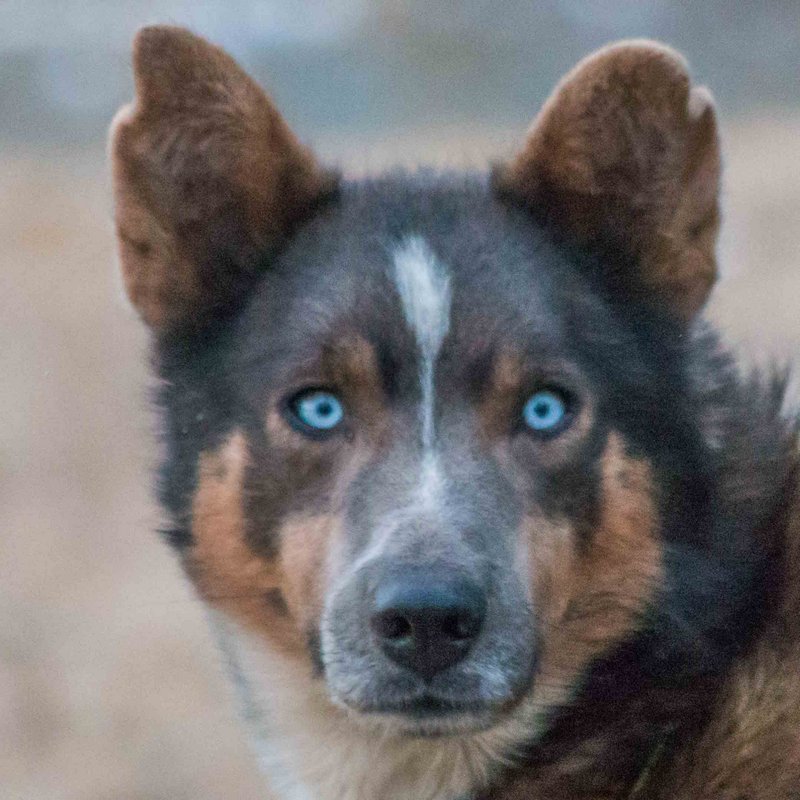It’s getting exciting!
After 3 1/2 hours of rest both Ryan and Pete are back on the trail to Koyuk. Pete dropped 1 dog and left with 10 in harness.
Ryan is not quite 45 minutes ahead, but he will looking back all night for that orange and black parka hot on his tail. This can be a tough long stretch was Koyuk seems to just sit there hour by hour.
This run reminds me each year of the year Team Kaiser passed Mitch Seavey in the middle of the night completely asleep at the wheel. Nothing like great lead dogs!
The interval is 6 miles and I am thinking we will see this play out for the foreseeable future. This is Iditarod racing at it’s finest. A good fast Team followed by another good fast Team. Anything can happen and both of these competitors have lived, dreamed, and planned for just this occasion.
For Ryan, this is the family business. The dream that of his grandfather, Joe Redington, to revitalize dog sled mushing and keep it alive is actually flowing through his veins. A Redington has never won this race, though not for the lack of trying on behalf of brothers, uncles, and cousins. Ryan is on the coast and this is the closest any of them has been.
For Pete, this is also the culmination of a dream spawned on the kitchen table with his mom and dad, and now his life and that of his own family. Already a champion, Pete lives for this competition. This is what all the rest of the 355 days of the year revolve around.
It is going to come down to consistency and also to luck of what lies ahead. Anything can happen in the next 200 miles of trail.
We should see these guys into Koyuk between 9 and 10pm this evening, depending on trail and wind.
Go Team Kaiser! Please consider stopping by the Team Kaiser Facebook Page and giving us a like! No matter what happens, we want a great welcome for him online!!
I have been contemplating the Team lately and am truly amazed by the breeding and endurance of this great animal. After doing a little research I found that dogs were being selectively bred over 9500 years ago in the arctic!! Read below to learn some cool details about this breed and what makes it so amazing:
From the New York Times- https://www.nytimes.com/2020/06/25/science/arctic-sled-dogs-genetics.html
Sled dogs have well-known roots in human prehistory. A 12,500-year-old tool found at one Arctic site hints at its possible use on sleds. And archaeological investigations at a well-known site on Zhokov Island in the Siberian Sea uncovered dog bones and sled technology indicating that the dogs may have been the first canines bred for a specific task.
Dr. Sinding and colleagues dug deep into the DNA of one of those dogs, using a jawbone from the site dating to 9,500 years ago. They also sequenced the genomes of a Siberian wolf dating to 33,000 years ago and 10 modern Greenland sled dogs. They relied on other canine genomes archived in databases as well.
They found that the Zhokov dog was closest to modern-day sled dogs, particularly to the Greenland sled dogs, which are a “land race,” bred for a task and sharing a look and behavior but not the sort of breed for which studbooks and records are kept.
The Zhokov dog was not a direct ancestor of modern sled dogs, but it shared a common ancestor with modern sled dogs that was probably about 12,000 years old. This evidence suggested that the sled-dog type, bred for hauling loads in brutal winters, was already established 9,500 years ago.
The researchers also found that sled dogs, ancient and modern, did not show interbreeding with wolves, even though other modern dog breeds do, and dog-wolf matings were known in Greenland in historic times. The results suggest hybrids may not have been much use in pulling sleds.
Then the researchers started looking for genes that were different in sled dogs from both wolves and other dog breeds. They found several that made sense. One is involved in a variety of physiological functions including calcium transport and temperature sensitivity. They don’t know what exactly it does in sled dogs, but they do know that several similar genes are different in mammoths, creatures of the cold, and elephants, animals of more temperate climates, suggesting some kind of adaptation to arctic life.
Another gene that distinguished sled dogs from other dogs is involved in coping with low oxygen conditions. It is also found in a group of humans, sea nomads, who have been diving for thousands of years. It could, Dr. Sinding said, contribute to fitness for the extreme demands of long sled-hauling trips.





















